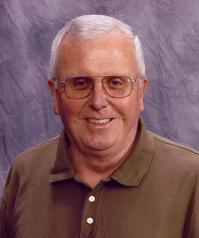Zell E. Peterman 1998 Goldich Medal Recipient
It's my personal pleasure to introduce Zell E. Peterman, this years Goldich Medalist. Zell richly deserves this highest honor of the Institute on Lake Superior Geology because of his many outstanding contributions to Precambrian geology and geochronology of the Lake Superior region.
Zell received a Geologic Engineering degree from the Colorado School of Mines, a masters in Geology from the University of Minnesota, Minneapolis, and a Ph.D. in Geology in 1962 from the University of Alberta. At Minnesota, Zell was a student of Sam Goldich.
Zen has spent all of his career-except for the years since 1994-with the Geologic Division of the U.S. Geological Survey, and it was in this capacity that he carried out most of his geochronologic research that we acknowledge today.

A major contribution was a study of Archean rocks across the Great Lakes tectonic zone in the Marenisco-Watersmeet area in Michigan. This study established that gneisses in the Minnesota River Valley subprovince are as old as 3,550 Ma and flanking metavo1canicmetasedimentary rocks in the Wawa subprovince (to the north) are in the range 2.6-2.8 Ga. This pattern has proved to be characteristic of Michigan-Wisconsin.
In the late 1980s, in an innovative study utilizing Rb-Sr ages of biotite, Zell outlined the uplift history of the Goodwin Swell in northeastern Wisconsin-a lithospheric flexure caused by crustal loading along the Midcontinent Rift System. This is the sort of thing that has been characteristic of Zell. More than most people, he has the ability to use various geochronologic techniques to solve problems most of us mortals don't know even exist.
Since 1994, Zell has been involved in DOE's Yucca Mountain Project, and some of the successful techniques used to solve projects just blow your mind.
I should mention Zell's administrative duties and skills. From 1971 to 1976, he was branch chief of the USGS's Branch of Isotope Geology, a time when the Isotope Branch was flourishing. Since 1994, he has assembled an isotope hydrology team under the Yucca Mountain Project that is doing many marvelous things, particularly using Rb-Sr tracers.
Submitted by P.K. Sims
Awarded May 7, 1998
Minneapolis, Minnesota
44th Annual Institute on Lake Superior Geology